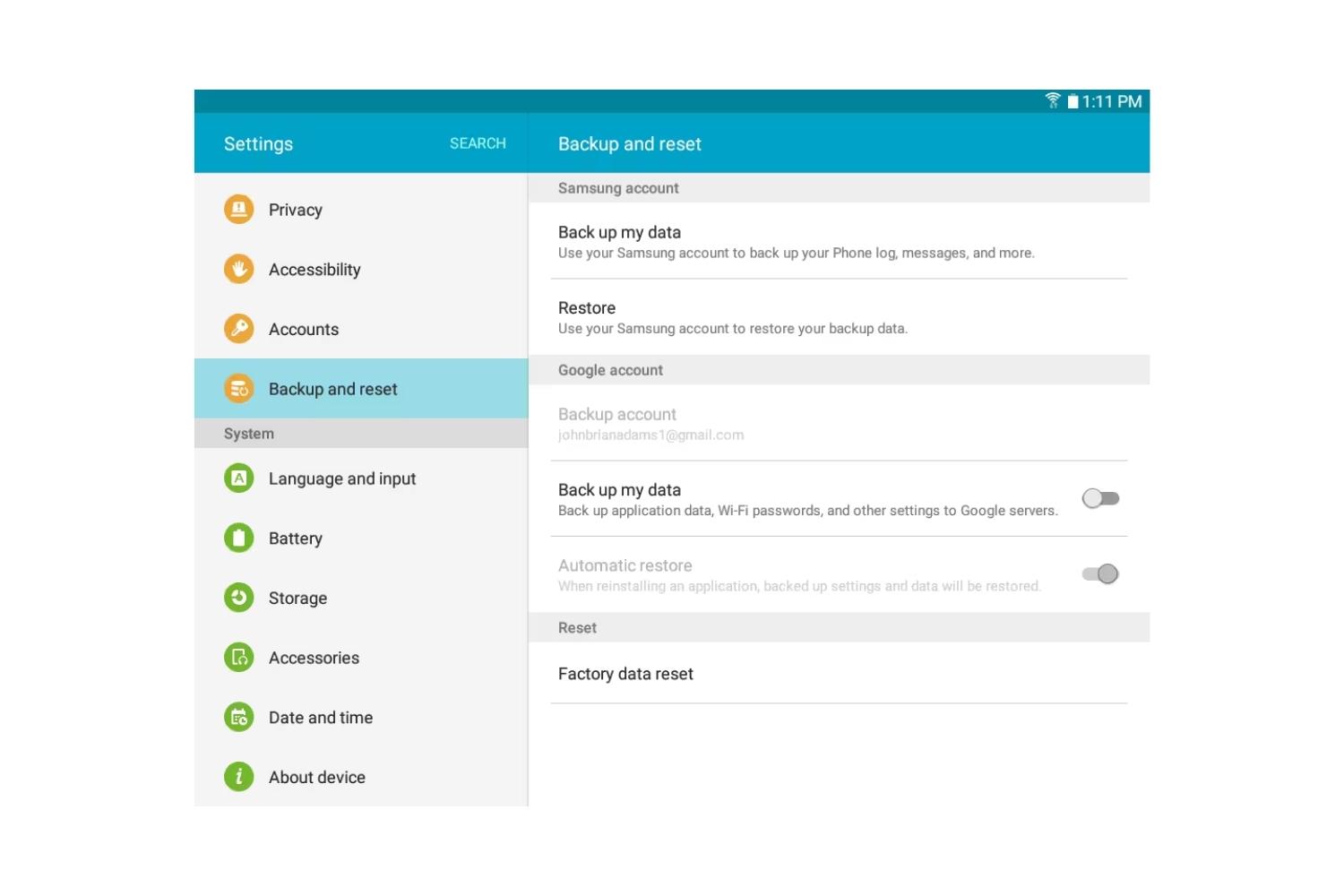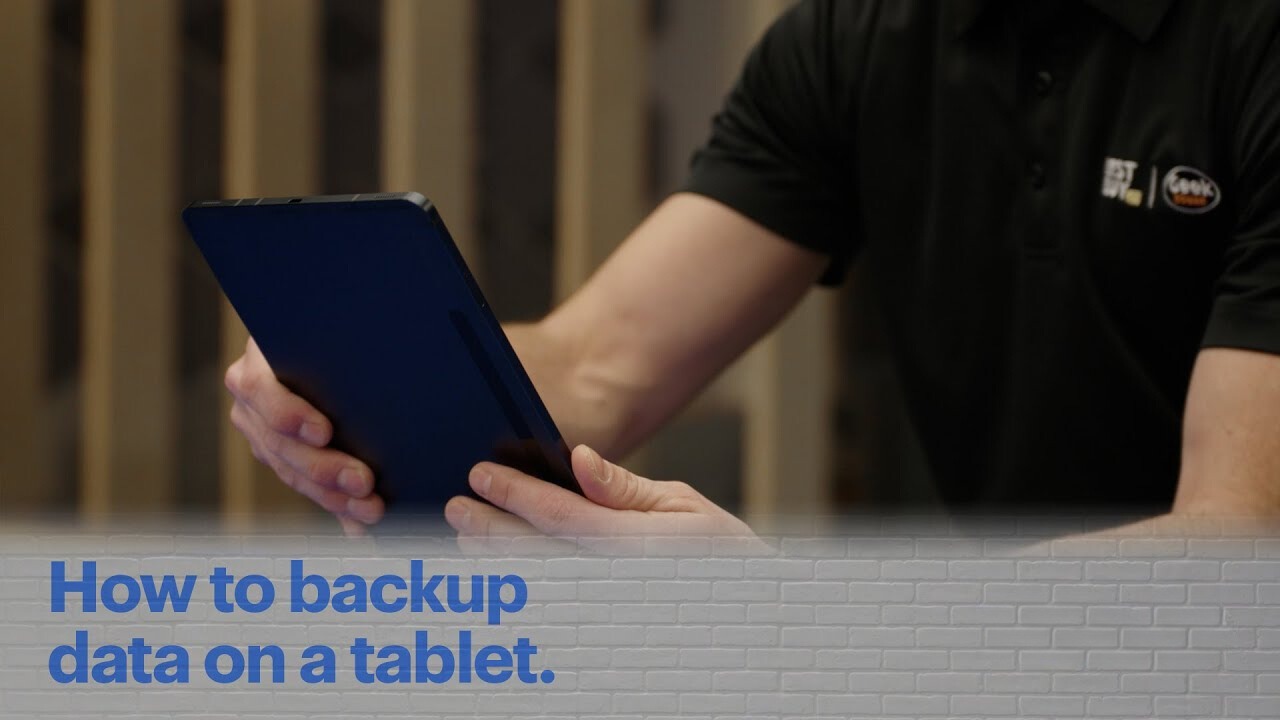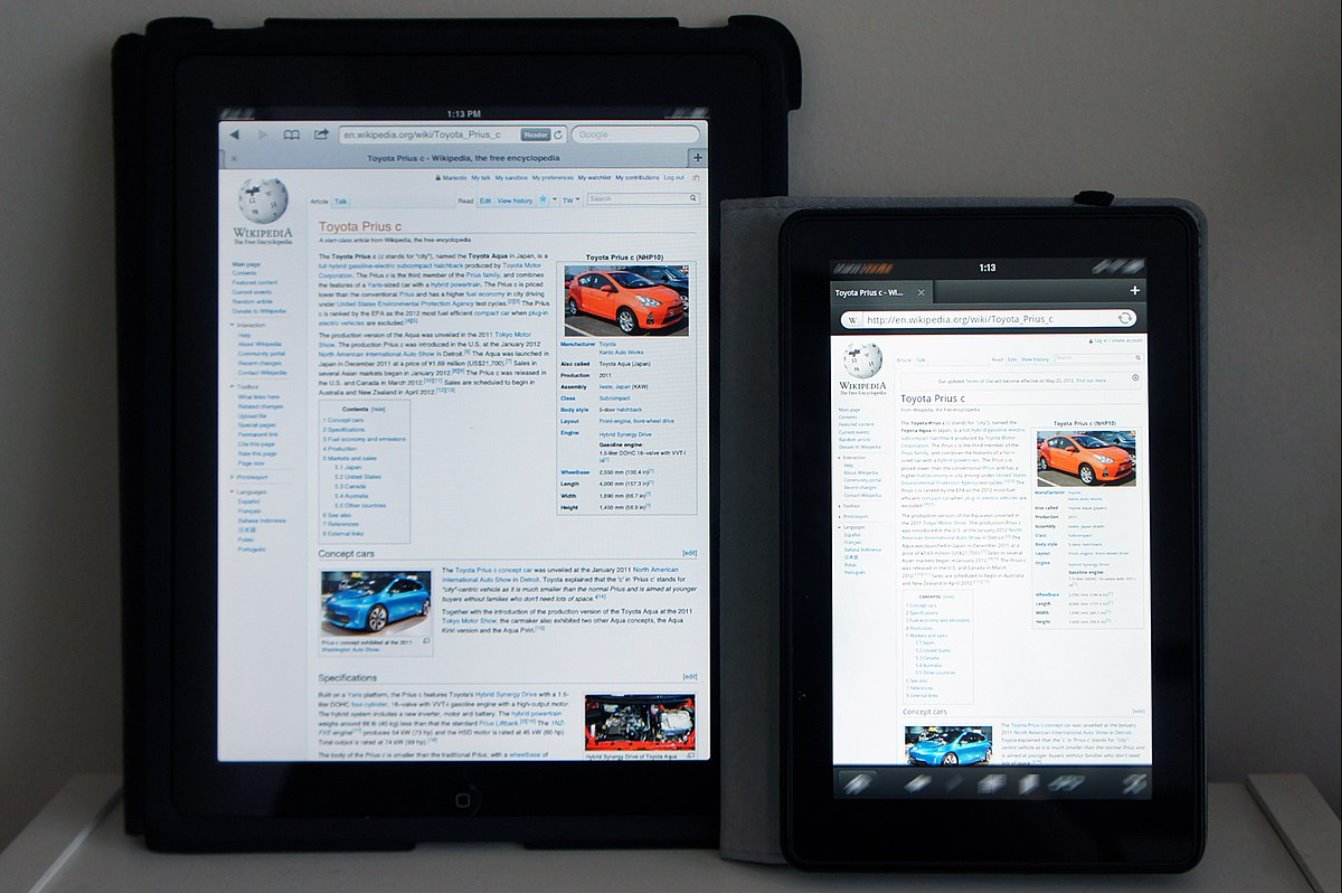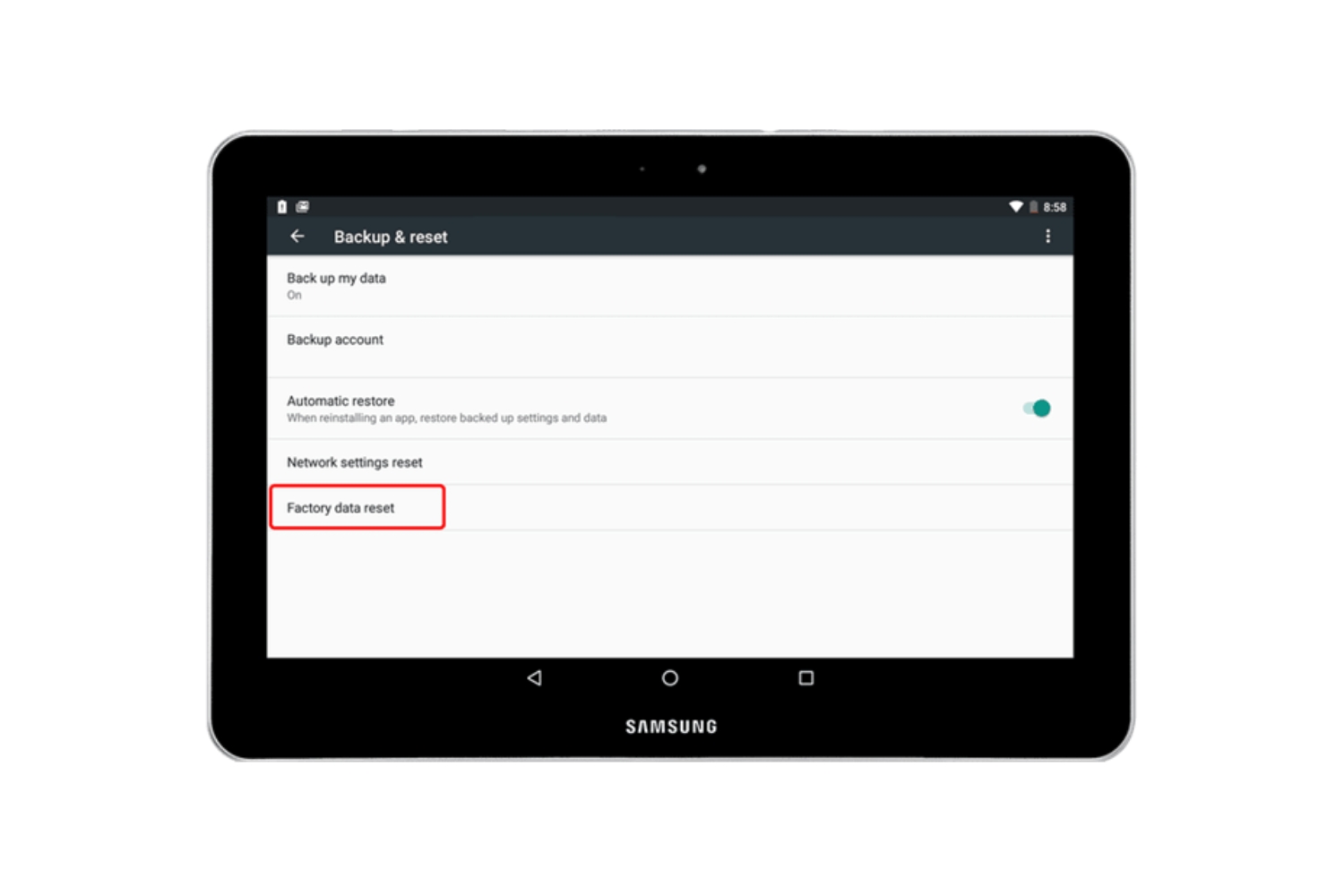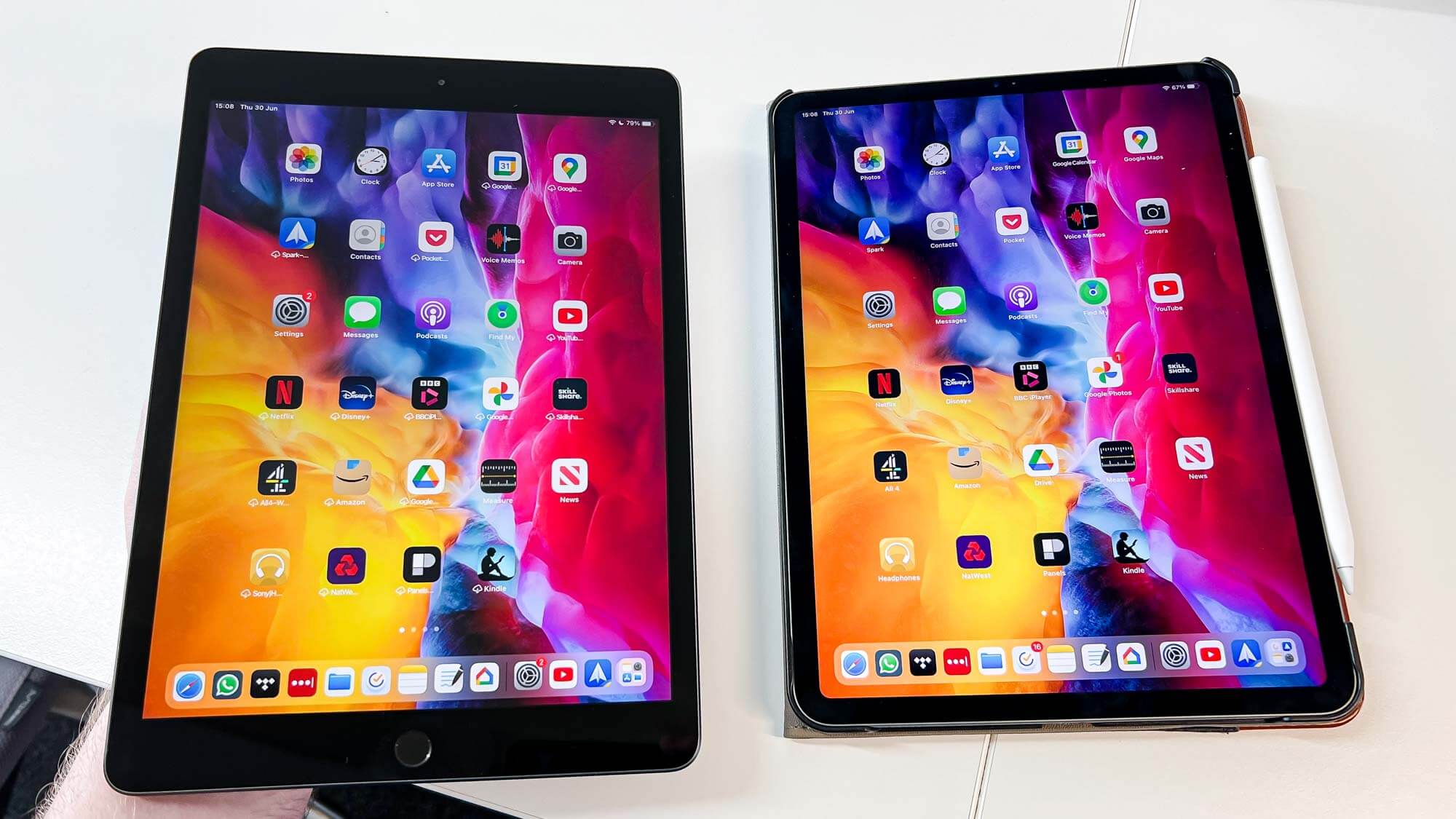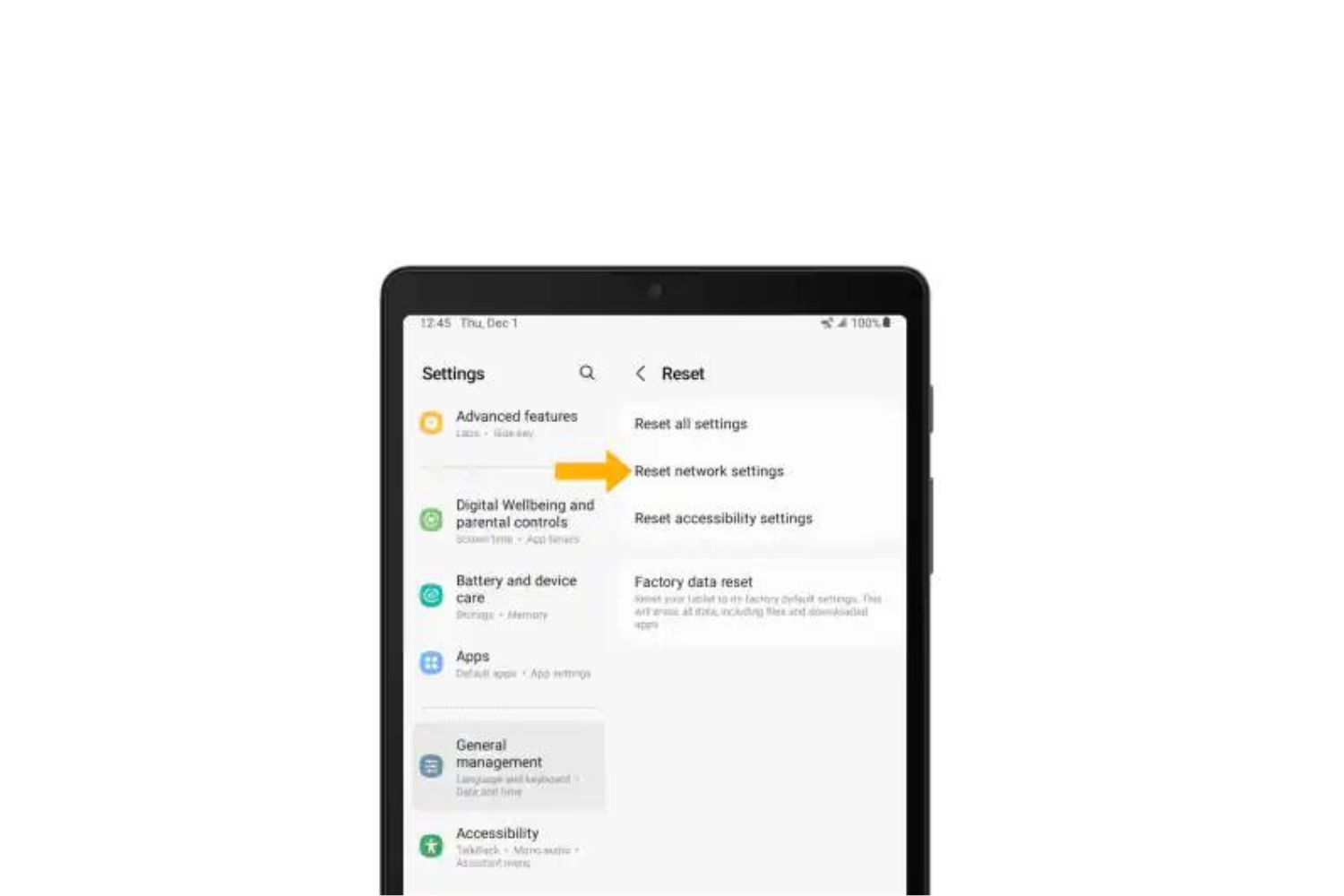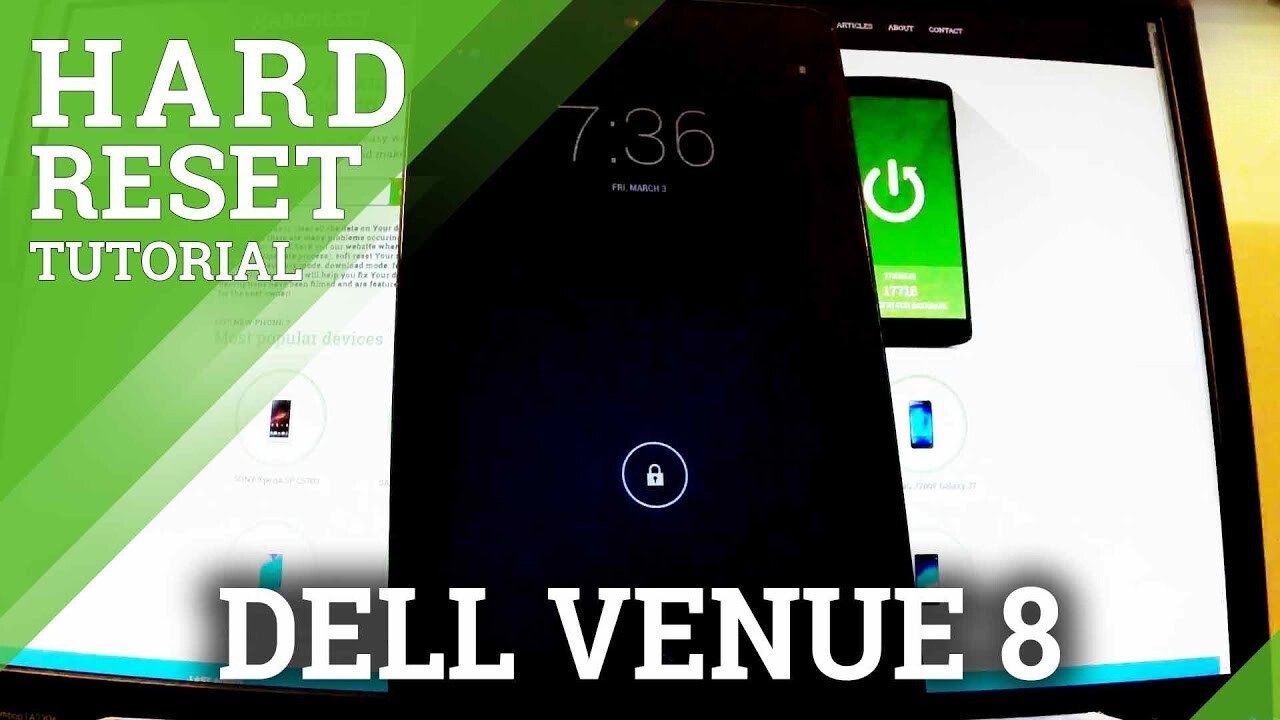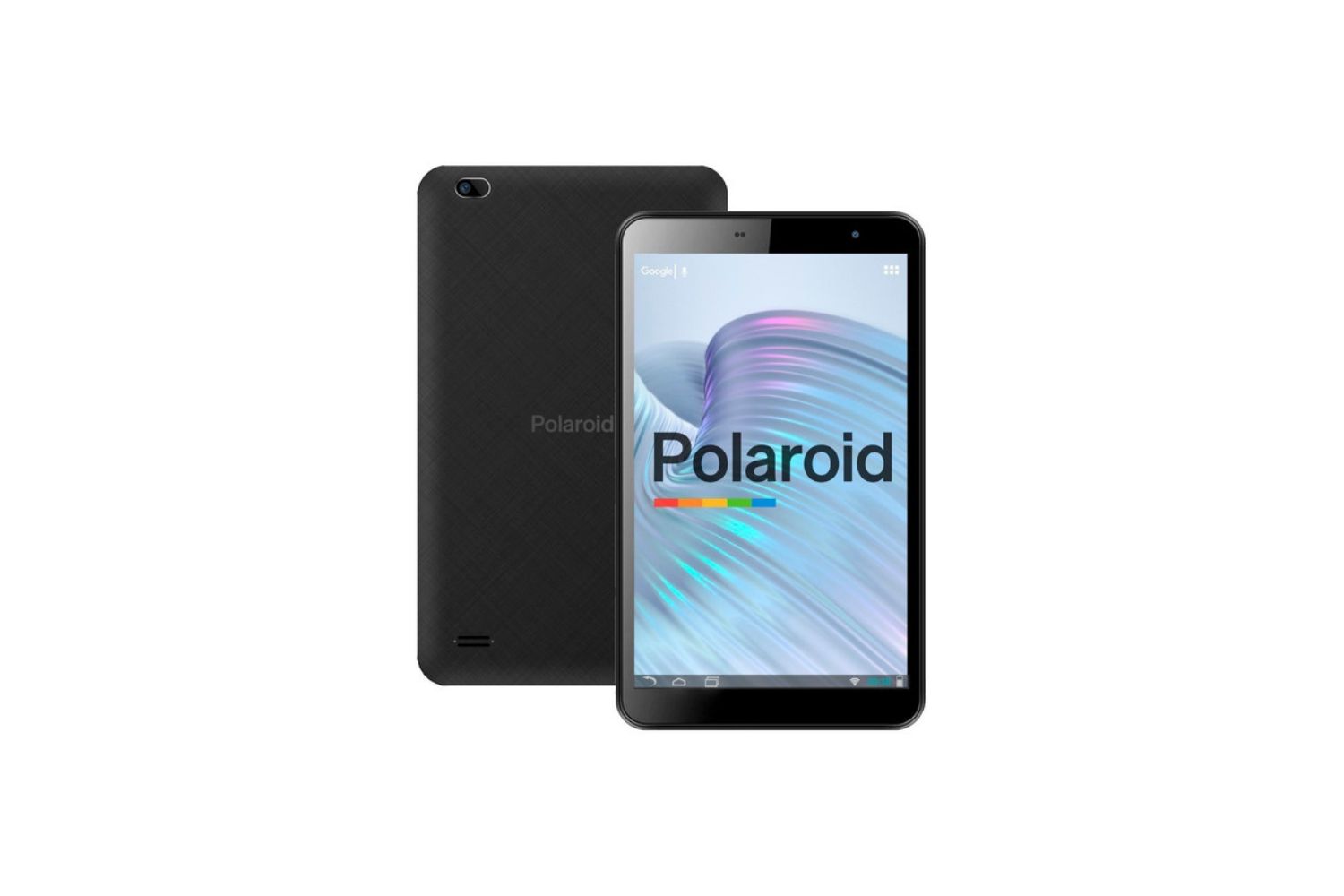Introduction
Welcome to our guide on how to backup a tablet! In this digital age, tablets have become an essential device for many individuals, used for various purposes such as work, entertainment, and communication. With the amount of valuable data and personal information stored on tablets, it is crucial to have a backup system in place to protect against potential data loss.
Backing up your tablet is like creating a safety net for all your important files, photos, videos, and other digital content. It ensures that even if your tablet gets lost, stolen, or damaged, you can still retrieve your data and restore it to a new device. Additionally, backing up your tablet gives you peace of mind knowing that your cherished memories and essential documents are securely stored and easily accessible.
While the process of backing up a tablet might seem daunting at first, it is actually quite simple and can be done in a few different ways. In this guide, we will walk you through various methods to backup your tablet and provide useful tips to ensure a successful backup process.
Whether you own an iPad, Android tablet, or any other brand, the backup methods we will discuss are applicable to most tablets on the market. So, whether you are a tech-savvy individual or a beginner, you can follow these steps to safeguard your tablet data.
Why is backing up important for tablets?
Backing up your tablet is crucial for several reasons. Here are a few key reasons why backing up your tablet should be a top priority:
- Protection against data loss: Tablets are portable devices that are susceptible to loss, theft, or damage. If you don’t have a backup, you risk losing all your important files, documents, photos, and other valuable data. Backing up your tablet ensures that even if the device is lost or damaged, you can still access and restore your data.
- Recovery from system failures: Tablets, like any other electronic device, can experience system failures or crashes. These failures can result in data corruption or loss. Having a recent backup allows you to recover your data and restore your tablet to its previous state.
- Easier device migration: If you decide to upgrade to a new tablet or switch to a different brand, having a backup simplifies the migration process. You can transfer all your data, settings, and apps to the new device easily, saving you the hassle of manually setting up everything again.
- Protection against accidental deletion: We’ve all been there – accidentally deleting important files or photos on our tablets. With a backup, you can easily retrieve the deleted items and restore them to your tablet.
- Peace of mind: Knowing that your valuable data is backed up provides peace of mind. You can relax knowing that even in the worst-case scenario, your digital content is safe and can be restored.
In summary, backing up your tablet is essential for protecting your data, recovering from system failures, easing device migration, recovering accidentally deleted files, and giving you peace of mind. By regularly backing up your tablet, you can ensure that your valuable data is safe and easily recoverable.
Different methods for backing up a tablet
When it comes to backing up your tablet, there are several methods you can choose from. Each method has its own advantages and considerations. Let’s explore the different options:
- Using cloud storage services: Cloud storage services like Google Drive, iCloud, or Dropbox offer a convenient way to backup your tablet. These services provide a designated amount of free storage and allow you to upload your files, photos, and videos to their servers. This method ensures that your data is securely stored offsite, protecting it from physical damage or loss. Plus, you can easily access and restore your data from any device with an internet connection.
- Backing up to a computer: Connecting your tablet to a computer and performing a manual backup is another common method. You can use software like iTunes for iPads or Android File Transfer for Android tablets to transfer and backup your files. This method allows for local storage of your data, which can be beneficial if you have limited internet connectivity or prefer having direct control over your backup files.
- Using a dedicated backup app: There are various backup apps available in app stores that are specifically designed to backup tablet data. These apps offer additional features, such as scheduled backups, incremental backups, and selective file backup options. They provide a user-friendly interface, making the backup process straightforward and convenient.
- Utilizing the tablet’s built-in backup features: Many tablets, both iOS and Android, come with built-in backup features. These features allow you to backup your tablet data directly within the settings menu. You can typically choose to backup your entire device or select specific data, such as contacts, calendars, or app data. Utilizing these built-in backup features ensures compatibility and seamless restoration of your data on the same or a new device.
It’s worth noting that you can also combine multiple backup methods for added security and redundancy. For example, you can backup your tablet to both a cloud storage service and a computer for extra data protection.
Ultimately, the choice of backup method depends on your preference, available resources, and the level of control you want over your backup process. The important thing is to establish a consistent backup routine and ensure that your valuable tablet data is safely stored and easily recoverable.
Method 1: Using cloud storage services
Backing up your tablet using cloud storage services is a popular and convenient method. Here’s how you can use cloud storage services to backup your tablet:
- Choose a cloud storage service: There are several cloud storage services available, such as Google Drive, iCloud, Dropbox, and OneDrive. Choose a service that best suits your needs and sign up for an account.
- Install the cloud storage app: Install the cloud storage app on your tablet from the respective app store. Once installed, sign in to your account using your credentials.
- Select the files to backup: Open the cloud storage app and select the files, photos, and videos you want to backup. Most cloud storage apps allow you to manually select specific files or folders to backup.
- Initiate the backup: Start the backup process by tapping on the backup button or selecting the backup option within the app. Depending on the size of the data being backed up and your internet connection speed, the backup process may take some time.
- Check the backup status: Once the backup is complete, you can check the backup status within the cloud storage app. It should display the date and time of the last successful backup.
- Access and restore your data: With your data backed up to the cloud storage service, you can now access and restore it on any device with the respective cloud storage app. This is useful if you ever need to switch to a new tablet or access your data from a different device.
Using cloud storage services for tablet backup offers several advantages. Firstly, your data is stored securely on remote servers, protecting it from physical damage or loss. Secondly, you can easily access and restore your data from any device with an internet connection. Lastly, many cloud storage services offer a certain amount of free storage, with options to upgrade to larger storage capacities if needed.
Remember to regularly check your cloud storage account and ensure that your tablet data is being backed up successfully. Also, consider enabling automatic backup settings within the cloud storage app to ensure that your data is continuously backed up in the background.
Overall, utilizing cloud storage services provides a convenient and reliable way to backup your tablet data, offering peace of mind knowing that your valuable files are safe and easily accessible.
Method 2: Backing up to a computer
Backing up your tablet to a computer is another common method that offers local storage and greater control over your backup files. Here’s how you can backup your tablet to a computer:
- Connect your tablet to the computer: Use the appropriate USB cable to connect your tablet to your computer. Ensure that both the tablet and the computer are powered on.
- Enable file transfer mode: On your tablet, when prompted, select the option to enable file transfer mode or to connect as a media device. This will allow your computer to access the tablet’s storage.
- Open the file explorer on your computer: On your computer, open the file explorer or file manager application. Depending on your computer’s operating system, this could be Windows Explorer on Windows or Finder on macOS.
- Navigate to your tablet’s storage: In the file explorer, locate your tablet’s storage device. It is usually displayed as a separate device or drive.
- Select the files to backup: Once you have access to your tablet’s storage on your computer, navigate to the files, photos, and videos you want to backup. You can manually select specific files or folders to backup.
- Copy the files to your computer: To backup the selected files, simply copy and paste them from your tablet’s storage to a folder on your computer. You can create a new folder specifically for the backup.
- Verify the backup: After the files have been copied, double-check to ensure that the backup was successful. Open the backup folder on your computer and confirm that the files have been transferred properly.
Backing up your tablet to a computer provides the advantage of having your data stored locally, giving you direct control over the backup files. In addition, this method can be useful if you have limited internet connectivity or prefer having physical copies of your files.
Remember to regularly backup your tablet to the computer, especially before performing any software updates or major changes to your device. This will ensure that your data is protected and easily recoverable if any issues arise.
It’s worth mentioning that some devices may require specific software, such as iTunes for iPads, to successfully backup to a computer. Make sure you have the necessary software installed and updated for seamless backup and restore processes.
In summary, backing up your tablet to a computer offers local storage of your data and gives you more control over your backup files. By following the simple steps outlined above, you can ensure that your valuable tablet data is safely stored and easily recoverable when needed.
Method 3: Using a dedicated backup app
If you prefer a more streamlined and automated approach to backup your tablet, using a dedicated backup app is a great option. These apps are specifically designed to handle the backup process efficiently. Here’s how you can backup your tablet using a dedicated backup app:
- Select a backup app: Explore the app store on your tablet and look for reputable backup apps. Read user reviews, check ratings, and consider the features offered by each app before making a selection.
- Install and set up the app: Download and install the chosen backup app on your tablet. Once installed, open the app and follow the setup instructions provided by the app. This usually involves signing in with an account and granting necessary permissions.
- Choose the backup options: Within the backup app, you will have various options to choose from. Select the files, photos, videos, contacts, and other data you want to backup. Some backup apps also offer customization options for scheduling, incremental backups, or selecting specific folders.
- Initiate the backup process: Start the backup process by tapping on the backup button or selecting the backup option within the app. Depending on the size of the data being backed up and the app’s algorithms, the backup process may take some time.
- Monitor the backup progress: While the backup is in progress, you can monitor the progress within the app. It will typically show you the status, percentage completed, and estimated time remaining for the backup process.
- Verify the backup: Once the backup is complete, you can verify the backup by checking the app’s backup history or viewing the restored data on your tablet. Ensure that all the selected data has been successfully backed up without any issues.
Dedicated backup apps offer a user-friendly interface and often provide additional features to enhance the backup experience. These features may include automatic backups, data compression, encryption for added security, and seamless integration with cloud storage services.
Regularly check the backup app settings to ensure that your tablet data is backed up according to your preferences. Set up automatic backup schedules or enable real-time backups if the app supports these features, as it will ensure your data is continuously protected and up-to-date.
Overall, using a dedicated backup app streamlines the backup process and provides peace of mind knowing that your tablet data is being automatically safeguarded. Explore different apps, experiment with features, and find the app that best suits your backup needs.
Method 4: Utilizing the tablet’s built-in backup features
Many tablets, both iOS and Android, come equipped with built-in backup features that allow you to easily backup your data directly from the device’s settings. Here’s how you can utilize the tablet’s built-in backup features:
- Open the Settings: On your tablet, navigate to the Settings app. It is usually represented by a gear icon.
- Locate the Backup & Restore or Backup & Reset option: Within the Settings menu, look for an option related to backup and restore or backup and reset. The exact terminology may vary depending on the operating system and device.
- Select the backup options: Once you’ve accessed the backup settings, you will usually find a range of options to choose from. Select the data you want to backup, which may include contacts, calendar events, photos, videos, app data, and more.
- Initiate the backup process: Tap on the backup button or the option to start the backup process. This will initiate the backup of your selected data to either the device’s internal storage or an associated cloud storage service.
- Monitor the backup progress: While the backup is in progress, you can monitor its progress within the backup settings. It may display the status, estimated time remaining, or a progress bar to indicate how far along the backup process is.
- Verify the backup: Once the backup process is complete, you can verify the backup by checking the respective backup settings. Ensure that all the selected data has been successfully backed up without any issues.
The advantage of utilizing the tablet’s built-in backup features is the seamless integration with the operating system, ensuring compatibility and a smooth restore process. The built-in backup features also often allow for easy migration to a new tablet or device, as the backup data can be conveniently restored.
Remember to regularly check the backup settings and ensure that your tablet data is being backed up according to your preferences. Set up automatic backup schedules if available, as it will simplify the backup process and ensure that your data is continuously protected.
It’s worth noting that the specific steps and options for utilizing the tablet’s built-in backup features may vary depending on the tablet’s brand, model, and the version of the operating system it is running.
Overall, utilizing the tablet’s built-in backup features provides a straightforward and integrated method to backup your tablet data without the need for additional apps or services.
Tips for a successful tablet backup
Backing up your tablet is essential for protecting your valuable data. To ensure a successful backup and a seamless restoration process, consider the following tips:
- Regularly backup your tablet: Set up a consistent backup schedule to ensure that your data is always up-to-date. Whether it’s daily, weekly, or monthly backups, find a frequency that works best for you and stick to it.
- Choose the right storage option: Consider the storage options available for your tablet backups. Cloud storage services provide offsite storage and easy accessibility, while local backups offer more control over your files. Depending on your preferences and requirements, choose the storage option that suits you best.
- Encrypt your backups: If your backup method allows it, consider encrypting your backups to add an extra layer of security. This will protect your sensitive data from unauthorized access in case of lost or stolen backups.
- Verify your backups: After each backup, take the time to verify that the backup process was successful. Double-check that all the selected files and data have been properly backed up and are ready for restoration, if needed.
- Test the restoration process: To ensure that your backups are truly effective, periodically test the restoration process. Select a few files or data points and restore them to your tablet to confirm that the backup data is fully functional and accessible.
- Backup essential app data: Some apps store important data locally on your tablet. Check if there are any backup options within the apps and enable them to safeguard the app-specific data that may not be included in the general tablet backup.
- Clear up storage space: Before initiating a backup, clean up unnecessary files and apps from your tablet. This not only helps optimize the backup process but also ensures that you are only making copies of relevant and important data.
- Maintain a separate backup: Consider keeping an additional backup copy of your tablet data. This can be in the form of a physical hard drive or a secondary cloud storage service. Having a duplicate backup adds an extra layer of protection against potential data loss.
- Stay organized: Organize your files and folders on your tablet to make the backup process more efficient and manageable. Label folders and categorize your data in a logical manner to easily find and back up specific files when needed.
Remember that a successful tablet backup is only effective if it is done with consistency and careful consideration. By following these tips, you can ensure that your tablet data is well-protected and easily recoverable in the event of data loss or device failure.
Conclusion
Backing up your tablet is a crucial step to protect your valuable data and ensure its availability in case of loss, damage, or system failures. By following the methods outlined in this guide, you can establish a reliable backup system that suits your needs. Whether you choose to use cloud storage services, backup to a computer, utilize dedicated backup apps, or rely on the tablet’s built-in backup features, each method offers its own advantages and considerations.
Cloud storage services offer convenience, offsite storage, and easy accessibility from any device with an internet connection. Backing up to a computer provides local storage, direct control over backup files, and physical copies of your data. Dedicated backup apps streamline the backup process and often offer additional features such as automatic backups and integration with cloud storage services. Utilizing the tablet’s built-in backup features ensures seamless integration with the operating system and simplifies the restoration process.
Regardless of the method you choose, these tips will help you achieve a successful tablet backup: regularly backup your tablet, choose the right storage option, encrypt your backups for added security, verify and test your backups, backup essential app data, clear up storage space, maintain separate backups, and stay organized.
Remember, the data on your tablet is valuable and irreplaceable. Taking the time to backup your tablet regularly is a small investment that can save you from the stress and frustration of data loss. So, prioritize your data’s safety and establish a consistent backup routine today.







